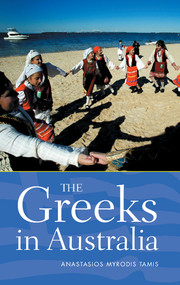6 - The Culture and Civilisation
Published online by Cambridge University Press: 22 September 2009
Summary
Greek language education
Greek is rated a major world language despite its small number of speakers, estimated at sixteen million, whose written history dates from the fourteenth century BC (Linear B syllabary script). It is the official language of the Hellenic Republic and the Republic of Cyprus and one of the nine official languages of the European Union (EU). It has also received considerable recognition in the countries of the world where substantial Greek speaking communities have settled and it continues to enjoy the status of an international language by virtue of its extensive penetration of western languages, particularly in their abstract, cultural, technological and scientific registers. In Diaspora communities, maintenance of the Greek language, culture and Orthodox faith are central to the mission of the organised Greek Communities and families.
The educational activities of the Greek Community during the first fifty years of settlement in Australia (1900–52) were inadequate due to demographic limitations and the nature of immigration, which remained entirely male-dominated until 1949. The number of families was comparatively small while concentration of Greeks in the large urban centres began only after 1935. These factors did not allow the operation of systematic schools, except in Melbourne, Perth and Sydney.
In Perth, in 1913, Archim. Germanos Iliou established the first part-time evening school named ‘Pittakos’, and in 1929 the first teacher to Australia was appointed there by the Greek Government, receiving remuneration equal to a priest's from the Hellenic Community of Western Australia.
- Type
- Chapter
- Information
- The Greeks in Australia , pp. 133 - 164Publisher: Cambridge University PressPrint publication year: 2005



